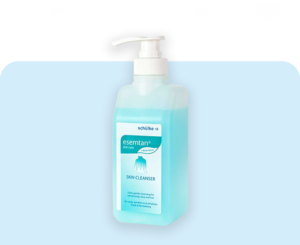Hand, foot and mouth disease is a common viral infection that affects young children. It is not to be confused with hoof and mouth disease, which affects cattle. Several different viruses, including Coxsackie, cause the disease. A virus, echovirus, and enterovirus. Symptoms include fever, sore throat, headache, mouth sores, poor appetite, and a rash on the hands and feet.
HOW LONG CAN HAND, FOOT MOUTH GERMS SURVIVE?
The viruses that cause hand, foot and mouth disease can survive for long outside the body. They can remain infectious for up to two hours on hard surfaces like tables or countertops. They can also be spread through coughing and sneezing.

WHAT ARE THE RISK FACTORS FOR THE DISEASE?
A few risk factors can increase a child’s chances of getting this disease. The first is age. Children under five years old are still building up their immunity against many infections, so they tend to get sick more often than older children or adults. The other main risk factor is contact with someone who already has the virus. The incubation period for this illness is anywhere from three to six days, so a child can get it before any symptoms.
HOW LONG IS A PERSON WITH HAND, FOOT AND MOUTH DISEASE CONTAGIOUS?
The virus that causes this disease can be passed from person to person through respiratory droplets. This means that if an infected person coughs or sneezes near any close contact, they are at risk of getting the illness too. It is also possible for someone who has not been exposed to catch it from direct contact with an infected person’s saliva or respiratory secretions (for example, sharing food utensils).
The disease is contagious from the time symptoms begin to show up until all of them have disappeared. A child may be contagious before showing signs and continue being contagious until all blisters have completely healed up. It can take anywhere from seven to ten days for this illness to run its course.
Children are usually most infectious during the first three days after they show symptoms. This means that many kids go back home before they realize their illness is contagious. For this reason, parents must keep a close eye on their children during the early stages of this illness.
HOW ARE HAND, FOOT AND MOUTH DISEASES TREATED?
There is no specific treatment or cure for hand, foot and mouth disease. However, some things can be done to help relieve the symptoms. These include:
- Drinking plenty of fluids: A child with hand, foot and mouth disease should drink plenty of fluids to stay hydrated. This will help replace the fluids lost through fever, vomiting, and diarrhoea.
- Taking over-the-counter medications: If pain or fever begins, medications like Ibuprofen or acetaminophen can help to reduce the symptoms. However, parents should consult with their paediatrician or a doctor from a disease control centre before giving any medications to a child.
- Using home remedies: There are a few home remedies that parents can try to help their child feel better. These include using ice packs on the feet and hands, giving children cold drinks, and sucking on ice chips or popsicles.
WHAT OTHER PRECAUTIONSCAN BE TAKEN TO PREVENT THE SPREAD OF THE DISEASE?
This disease is very contagious, so it is critical to prevent its spread. Parents and caregivers should wash their hands thoroughly with water, Esemtan skin cleanser, Octenisan Wash Lotion (for severe sensitive hands), or soap after touching an infected child or a contaminated surface. In addition, they can also use a hand sanitizer. Children should also be taught how to do hand sanitizer since it can help stop the spread of many other diseases!
Parents, caregivers and children should also avoid contaminated surfaces like toys, doorknobs, faucets or tables that may be contaminated with saliva or respiratory secretions from a person with hand, foot mouth disease. If it is necessary to touch one of these items, parents should wear gloves and wash their hands afterwards.






